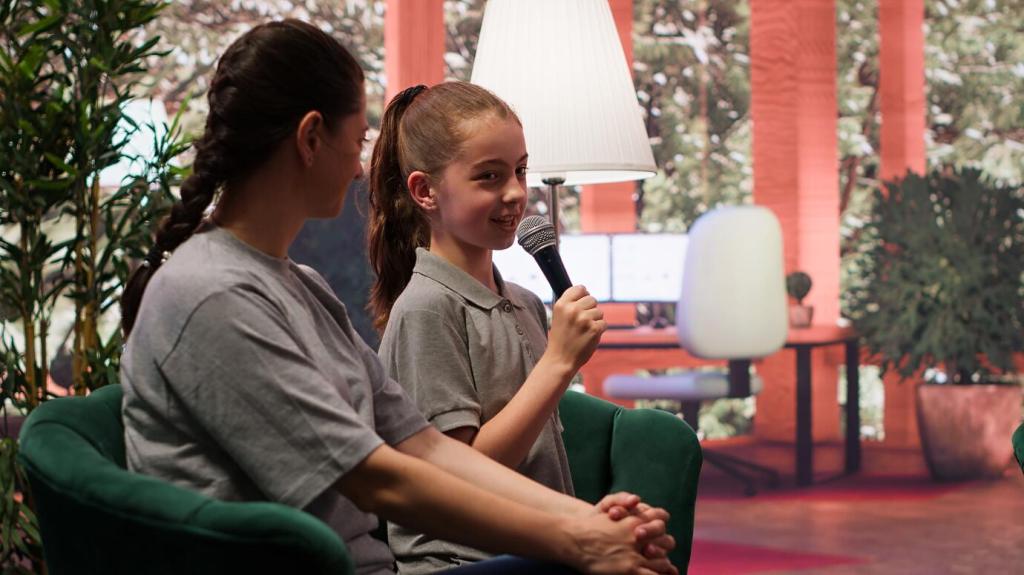
Chosen Theme: Using Visual Aids to Enhance Presentations
Unlock clearer messages, confident delivery, and memorable moments by mastering visual aids. Chosen theme: Using Visual Aids to Enhance Presentations. From thoughtful slide design to powerful props and data storytelling, discover practical techniques, engaging anecdotes, and field‑tested tips that help your audience see, feel, and remember your ideas. Subscribe for weekly visual templates and prompts.
Design Principles That Make Slides Stick
Arrange elements to reflect importance: one message per slide, bold headline, supportive evidence, and a generous margin of whitespace. Use scale and proximity to signal relationships. During rehearsal, ask a peer to glance for three seconds and say what they see first. If it’s not your point, revise.
Design Principles That Make Slides Stick
Choose a restrained palette and test contrast for readability, especially on projectors. Avoid red–green pairings that fail common color‑vision tests. Use color sparingly to highlight action, not decorate. Include meaningful labels so the message survives grayscale prints. Invite feedback from viewers in the back row before showtime.
Design Principles That Make Slides Stick
Favor clean sans‑serif fonts, consistent sizes, and real emphasis instead of all caps. Set line length for quick scanning, and ensure sufficient line spacing on dense slides. Replace bullet lists with structured layouts. If your text must be read aloud to make sense, it probably belongs in your notes.
Storytelling With Visuals
A nonprofit once swapped a table of statistics for a single before‑and‑after photo and a short caption. Donations doubled because viewers felt the change. Anchor your visuals to stakes and outcomes, not just facts. Ask: what changes, for whom, and why should the audience care right now?
Use metaphors that clarify, not clichés that distract. A bridge can show connection; a maze can show complexity. Pair icons with short verbs to suggest action. Test metaphors with colleagues from different backgrounds. If they interpret the image differently, refine until the story lands consistently.
Open with a visual that frames the problem. In the middle, reveal turning points slide by slide with purposeful builds. End with a concrete, visual next step. Keep a consistent visual motif to signal progress. Invite your audience to respond: which slide made the shift most tangible for you?
Data Visualization That Drives Decisions
Use bars for comparisons, lines for trends, and scatterplots for relationships. Reserve pies for very few categories with clear differences. When in doubt, sketch two options on paper and present both to a colleague. Ask which version answers the question faster. Keep the winner and scrap the rest.

The Power of a Simple Prop
An engineer once dropped a single Lego brick to show how a small defect scales on an assembly line; the sound stuck with everyone. Choose props that are visible, safe, and instantly legible. Practice handling them smoothly. Tell us: what prop would make your message land with a thud or a cheer?
Live Annotation and Whiteboards
Sketching ideas in real time signals openness and helps pace complex explanations. Use thick markers, large lettering, and simple shapes. Photograph the board for follow‑ups. If your handwriting is small, annotate directly on a slide with a tablet. Invite a volunteer to draw part of the process.
Cameras, Document Viewers, and Setup
Position a document camera or secondary webcam to capture close‑ups of objects or notebook sketches. Check lighting, focus, and framing before you begin. Keep backup visuals in case tech fails. Share your setup checklist with your team and ask for improvements after a rehearsal run.
Tools and Workflows for Visual Excellence
Create a master deck with pre‑styled layouts, color tokens, and text hierarchies. This prevents last‑minute chaos and keeps visuals consistent under pressure. Store examples of good slides as patterns. Share your template with colleagues and invite suggestions to improve accessibility and readability.


Tools and Workflows for Visual Excellence
Maintain a library of licensed photos, icons, and illustrations tagged by theme and mood. Track usage rights to avoid headaches. Favor authentic imagery over staged stock. Credit creators on a dedicated slide. Recommend your favorite trusted sources in the comments so others can discover them.
Engagement: Getting the Audience to Look, Think, and Act
Include quick polls, emoji cards, or color‑coded prompts that ask the room to react visually. Pause after revealing a chart and ask, “What surprised you?” Capture responses on a slide. Share outcomes in a follow‑up post and invite readers to repeat the exercise with their teams.
